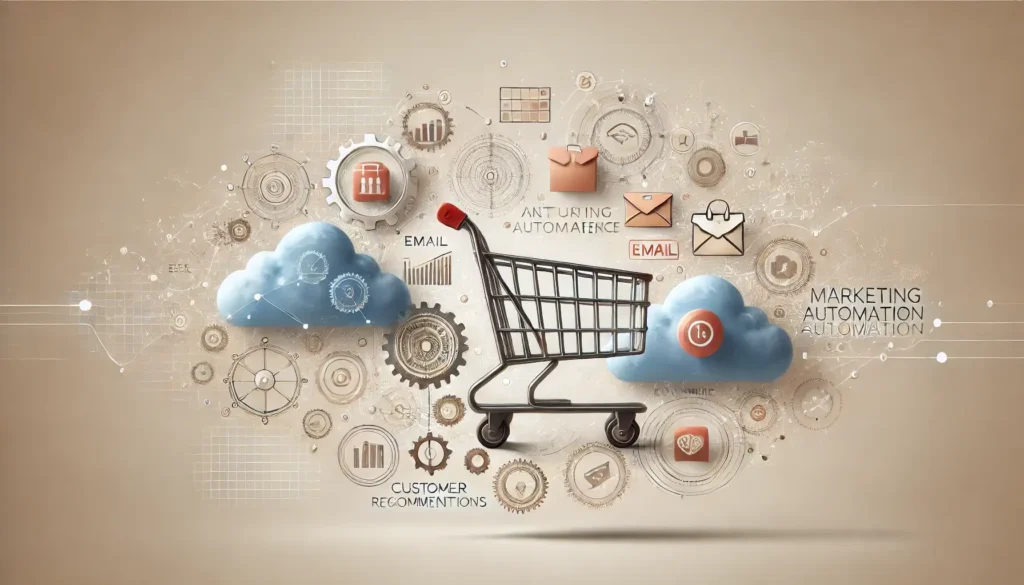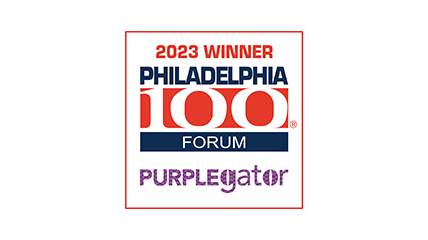Blog /
Marketing Automation for eCommerce: Complete Marketers’ Guide

Did you know that almost 80% of online stores are using at least one tool for marketing automation for ecommerce. These tools have completely transformed the whole online shopping industry and nowadays are one of the most important instruments for staying competitive and scaling up.
In this guide, we will explain all the essentials of e-commerce marketing automation, offer you practical tips and insights to boost your online store.
What is Marketing Automation for eCommerce?
Marketing automation for ecommerce deals with using software or technology for automating common marketing tasks in online retail operations. That is far from being just some simple action of sending auto-emails; it goes way beyond, in which various steps are followed to manage customer interactions through multiple channels. These key components usually are:
- Email marketing campaigns
- Customer segmentation and personalization
- Inventory and order management
- Social media management
- Customer relationship management (CRM)
Notable Statistic: The Annuitas Group found that marketing automation tools boost leads by 451%.
Tip: Find your most time-consuming marketing tasks and automate them, for example even if you set up follow-up emails for abandoned carts, you can save hours each week and eventually make a difference in your profits.
Key Benefits for eCommerce Stores
Implementing marketing automation in your ecommerce business yields numerous advantages:
- four out of five consumers are more likely to purchase if they receive personalized experiences from brands, based on Epsilon’s study
- business can save 6-7 hours per week on average through marketing automation, according to a study by Adestra
- automation makes data management better, as it reduces errors by up to 80% (Gartner)
- leads that are nurtured make almost half-size bigger purchases than non-nurtured leads
- 58% of companies using marketing automation say it has increased their productivity (Ascend2).
Insight: While most focus on the acquisition of customers, the real trick of automation is in customer retention. An increase of just 5% in customer retention can result in a rise in profits by as much as 25-95% (Bain & Company).
Tip: Create an automated system that suggests products after a customer makes a purchase, base these suggestions on the customer’s purchase history and it can increase repeat purchases by 30% (Barilliance)
Essential Marketing Automation Tools for eCommerce
To fully use the power of marketing automation tools for ecommerce, here is the list of tools:
Email marketing automation
Customer Relationship Management (CRM)
- Top picks: Salesforce and HubSpot
- Key feature: AI-powered lead scoring
Social media management
Chatbots and conversational marketing
- Top picks: Customers.ai, ManyChat
- Key feature: Integration with your product catalog for instant recommendations
Ecommerce Automation tools for Inventory and order management
- Top picks: Ordoro, Brightpearl
- Key feature: Automated reorder points to prevent stockouts
How to Implement Marketing Automation in Your eCommerce Business
Follow these steps for successful integration:
- Assess current processes
- Take your time and identify tasks that need the most time
- Use a tool like Toggl to track time spent on other marketing activities
- Choose the right tools
- Consider your tech stack and ensure new tools integrate well
- Look for platforms offering visual workflow builders for easier setup
- Integrate with existing systems
- Use platforms like Zapier for seamless integrations
- Implement a single customer view by centralizing data from all touchpoints
- Train your team
- Allocate at least 40 hours of training per tool for key team members
- Create standard operating procedures (SOPs) for each automated workflow
- Monitor and optimize
- Set up weekly performance reviews of automated campaigns
- Use A/B testing to continuously refine your automation strategies
Insight: Avoid rushing into automation, don’t do too much too quickly. Start with simple, impactful tasks.
Tip: Make a plan. Outline your automation steps for the next 6-12 months.
Key Marketing Automation Strategies for eCommerce
Implement these proven strategies to better automate tasks for ecommerce:
- Abandoned cart recovery
- Fact: 69% of carts are abandoned (Baymard Institute)
- Strategy: Set up a 3-email sequence over 72 hours, with the first email sent within an hour of abandonment
- Personalized product recommendations
- Fact: 35% of Amazon’s revenue comes from its recommendation engine (McKinsey)
- Strategy: Use collaborative filtering to suggest products based on “customers who bought this also bought…”
- Automated cross-selling and upselling
- Fact: Upselling can increase revenue by 10-30% on average (PredictiveIntent)
- Strategy: Offer relevant upsells immediately after purchase, when buying intent is highest
- Customer segmentation
- Fact: Email campaigns that are segmented can lead to 8 times more increase in revenue (Campaign Monitor);
- Use the RFM (Recency, Frequency, Monetary) analysis method and segment your customers.
- Automated loyalty programs
- Fact: Loyal customers are 5x more likely to repurchase and 4x more likely to refer (Qualtrics XM)
- Strategy: Automate point accumulation and tier upgrades, sending personalized rewards at key milestones
All the above-mentioned marketing automation strategies are powerful but remember that they work their best when used in combination. For example, combining personalized recommendations with abandoned cart emails can further increase recovery rates.
A tip from Purplegator is to conserve cart abandonment for actual carts and set up an automation for ‘browse abandonment’ to go along with it.

Email Marketing Automation for eCommerce
Email still is a cornerstone of marketing. Here’s how to leverage email marketing automation for ecommerce effectively:
- Triggered email campaigns
- Welcome series: Achieve 33% higher engagement than regular promotions (Omnisend)
- Post-purchase: Increase repeat purchases by 31% (Barilliance)
- Re-engagement: Recover up to 28% of lost customers (Salesforce)
- Advanced personalization
- Use dynamic content blocks that change based on user data
- Implement predictive product recommendations using AI
- Personalize send times based on individual open patterns
- A/B testing at scale
- Test subject lines, content, and CTAs simultaneously
- Use machine learning algorithms to continuously optimize
- Aim for at least 3-5 tests running concurrently
- Integration best practices
- Sync real-time inventory data to prevent promoting out-of-stock items
- Use website behavior tracking to trigger timely, relevant emails
- Integrate with your CRM for a unified view of customer interactions
- Compliance and deliverability
- Implement double opt-in to maintain a clean list
- Use engagement-based sunset policies to remove inactive subscribers
- Regularly authenticate your domains (SPF, DKIM, DMARC) for improved deliverability
Most successful ecommerce email campaigns aren’t about promotions. By taking an educational approach – say, offering product-usage tips or style guides, you could transform engagement even higher and build long-term relationships with your customers.
You can set up an email automation for consumable products commonly referred to as a “replenishment” series. Based on mean usage times, you can estimate when a customer will be out of stock and nudge reorders at just the right moment in time.
Measuring the Success of Your Marketing Automation Efforts
To see that your marketing automation for ecommerce is really driving results, you should keep track of these:
- Key Performance Indicators (KPIs)
- Conversion Rate: Compare your rate to industry benchmarks
- Customer Lifetime Value (CLV): Aim to increase this over time
- Return on Investment (ROI): Track this for each automated campaign
- Email Metrics: Monitor open rates, click-through rates, and conversions
- Average Order Value (AOV): Use automation to incrementally increase this
- Advanced tracking and analytics
- Implement cross-domain tracking for a holistic view of customer journeys
- Utilize Google Tag Manager for flexible, easy-to-update tracking
- Set up funnel visualization to identify and address drop-off points
- Calculating true ROI
- Factor in all costs: tools, implementation, and ongoing management
- Quantify time saved and reallocated to high-value tasks
- Measure incremental revenue by comparing automated campaigns to manual ones
- Continuous improvement framework
- Establish a regular review cycle for campaigns and strategies
- Use A/B testing platforms for systematic experimentation
- Create feedback loops with your customer service team to identify pain points
The results of ecommerce marketing automation are seen in long-term customer behavior changes. Track cohort analyses over 6-12 months to see the full impact on customer lifecycle and CLV.
You can also create a marketing automation scorecard that combines quantitative metrics with qualitative feedback. This holistic view will guide your optimization efforts and ensure you’re not overlooking important factors that pure numbers might miss.
Future of Marketing Automation in eCommerce
As ecommerce business, like any other digital industry, is constantly changing, in order to stay ahead of the curve, prepare for these trends:
- AI and machine learning
- use predictive analytics to forecast customer behavior
- explore AI-powered copywriting tools for content creation
- implement machine learning for dynamic pricing strategies
- Augmented Reality (AR) and Virtual Reality (VR)
- implement virtual try-on experiences for relevant products
- use AR for interactive product demonstrations
- create VR shopping environments
- Hyper-personalization
- develop real-time personalization capabilities
- create dynamic content to adapt individual user behavior
- implement AI-driven product recommendations
So, the future of ecommerce automation is that automation will for sure take over routine tasks, but successful brands will invest massively in personal, more authentic connections. However, if you haven’t started it yet, go small with emerging technologies. For instance, just use a simple AR feature for a product line that is most popular in your store. These first waves can give you great insights without requiring a huge investment.
If you need an agency to help you with your ecommerce marketing automation contact Purplegator, we have all the expertise you need.
Related Articles:







